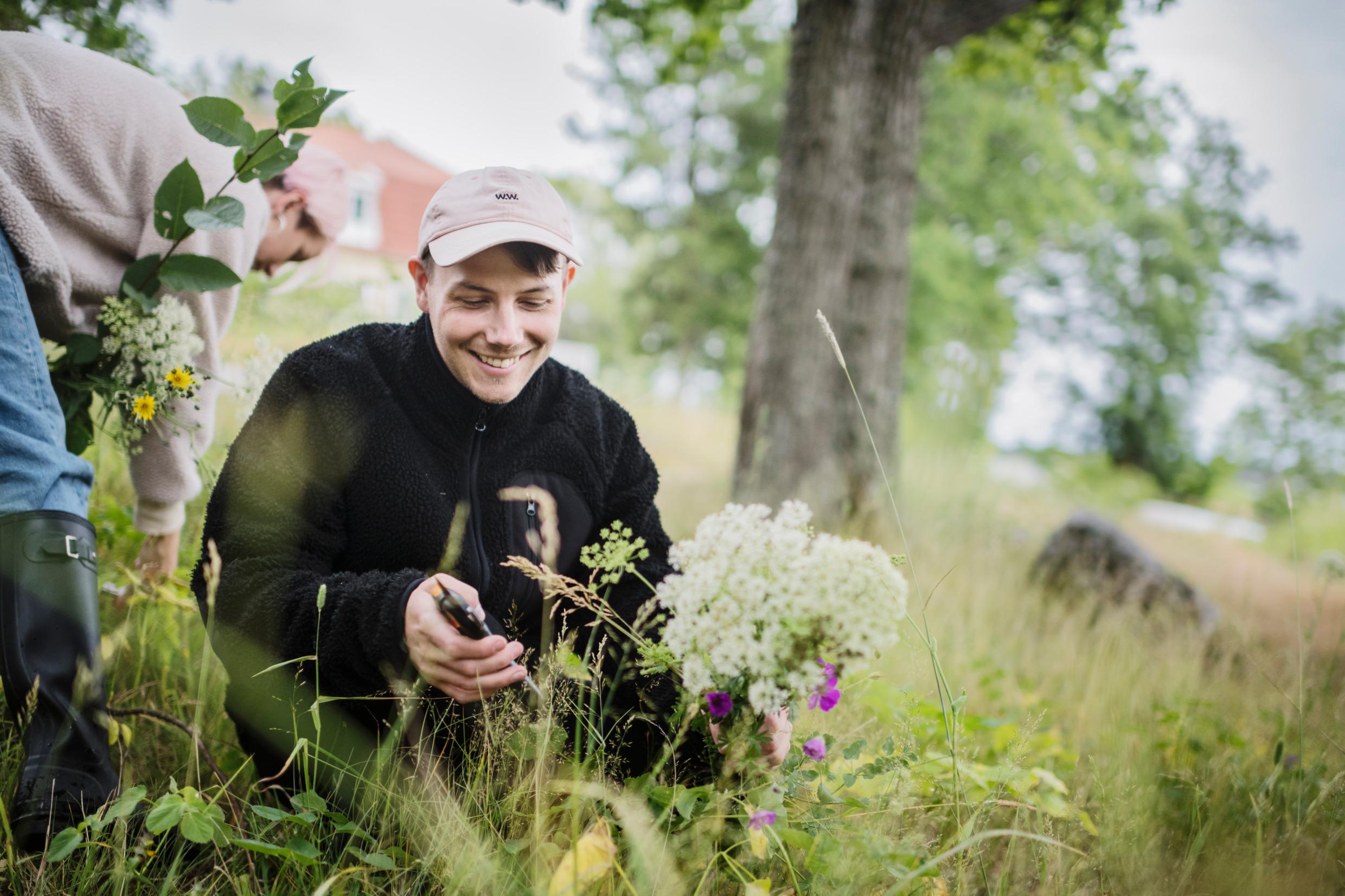
Midsummer in Sweden – like something from another world
Midsummer is here – and Swedes are getting ready to celebrate. Everyone’s welcome to join the fun – or why not host your own Midsummer party? Here’s how!

Midsummer is here – and Swedes are getting ready to celebrate. Everyone’s welcome to join the fun – or why not host your own Midsummer party? Here’s how!
Sweden’s official National Day is 6 June, but if you ask the locals, the real celebration happens during Midsummer. In 2026, Midsummer Eve falls on 19 June – and in many places, the festivities last the entire weekend. You’re warmly invited to join in!
The Christian tradition of celebrating the prophet St. John the Baptist coincides with the summer solstice. In Northern Europe, this date is still marked by bonfires and festivities.
From the late Middle Ages, Swedes began raising and dancing around a Midsummer pole. Decorating it with flowers and greenery is called 'maja', which is why it's also known as a maypole.
Back in Sweden’s agrarian past, the Midsummer night was believed to be a time of magic and mystery. Plants were said to gain healing powers, and rituals were used to predict the future. One such tradition involved picking seven different kinds of flowers and placing them under your pillow to dream of your future spouse. But don’t say a word while picking them – silence is key, or the magic won’t work.
Walking barefoot in the dew as night turned into dawn was thought to promote good health. Wearing a wreath of flowers symbolised fertility and rebirth. To preserve the flowers’ powers, many dried their bouquets and even placed them in the Christmas bath to keep the family healthy through the long winter.
Today, Midsummer is about celebrating that the best part of the year still lies ahead.
With roots in pagan times, Midsummer is a celebration of the summer solstice, the longest day of the year, but it is also a celebration of life and love. The celebration involves a lot of food and flowers, so preparations start early in the day with cooking and picking wild flowers.
Photo: Vilhelm Stokstad/imagebank.sweden.se

Photo: Vilhelm Stokstad/imagebank.sweden.se

Photo: Asaf Kliger/imagebank.sweden.se

Photo: Vilhelm Stokstad/imagebank.sweden.se
Like all major Swedish holidays, Midsummer revolves around eating and drinking – and a few culinary essentials you’ll find on almost every table.
At the heart of the Midsummer spread are fresh new potatoes, gently scrubbed and boiled with dill. These little golden gems, known as 'färskpotatis', make the perfect match for pickled herring, gravlax (cured salmon) and Swedish meatballs.
Pickled herring comes in many flavours – from classic onion to mustard, dill, or even curry. Sampling a few different types is part of the tradition (and the fun). Pair it all with crisp bread, butter, cheese and, for those who fancy it, a glass of Aquavit or 'snaps'.
This festive meal is part of the Swedish smorgasbord, a tradition Swedes also enjoy at Christmas and Easter. It evolved during the 1800s from the 'brännvinsbord' – a pre-dinner spread of bread, butter, cheese, cured salmon, anchovy or herring, sausages, dried meat and no less than three types of 'brännvin'. You can see historic examples of this setup at the Nordic Museum in Stockholm.
Of course, no Midsummer meal is complete without dessert. The star? Swedish strawberries – served with whipped cream or in a classic strawberry cake, also known as 'jordgubbstårta'. Thanks to long, bright spring nights and cooler temperatures, Swedish strawberries develop more sweetness and aroma. Any Swede will tell you: they’re the best in the world. And honestly, they might be right.
Midsummer takes place in June and is a celebration of the summer solstice, the longest day of the year. It is one of the most celebrated holidays in Sweden. A traditional lunch is served in the garden with pickled herring, new potatoes, cured salmon and drinking snaps followed by a drinking song.
Photo: Anna Hållams/imagebank.sweden.se

Photo: Anna Hållams/imagebank.sweden.se

Photo: Anna Hållams/imagebank.sweden.se

Photo: Alexander Hall/imagebank.sweden.se
A vital part of enjoying Aquavit is the toasting and singing. With each round, a new song is sung. The most popular drinking song is 'Helan går'. The name, meaning 'the whole goes (down)', refers to the first in a series of 'snaps'. Skip the first one, and you're not allowed the next – called 'Halvan', meaning 'the half'.
Drinking songs are a uniquely Swedish custom (also found in Swedish-speaking parts of Finland), and new ones are often written to familiar melodies with improvised lyrics. Stockholm’s Museum of Spirits has collected over 12,000 such songs. That’s enough to sing one every day for more than 32 years!
Kubb is a lawn game where the objective is to knock over wooden blocks by throwing wooden batons at them. The game can be played on any flat surface, but summer grass is favoured. The game has alleged Viking roots, although this is disputed. Its popularity took off in the 1980s and there is even a World Championship on the island of Gotland every summer.
Photo: Ulf Lundin/imagebank.sweden.se

Photo: Ulf Lundin/imagebank.sweden.se

Photo: Carolina Romare/imagebank.sweden.se
After the food and toasts, it’s time for games. Midsummer parties are delightfully whimsical, and everyone joins in – no matter the age.
Many parties include a round of 'femkamp', a set of five playful challenges. These can be anything from sack races and egg-and-spoon runs to invented games involving blindfolds, water buckets or rubber boots.
One outdoor favourite is 'kubb'. The aim of the game is to knock over ten wooden blocks and, eventually, the larger 'king', by throwing wooden sticks. Kubb is played in parks, on lawns and at summer cottages across Sweden. Every group seems to have their own house rules, so friendly debates about the proper way to play are often just part of the experience.
With roots in pagan times, Midsummer is a celebration of the summer solstice, the longest day of the year, but it is also a celebration of life and love. The celebration involves a lot of food and flowers, so preparations start early in the day with cooking and picking wild flowers.
Photo: Vilhelm Stokstad/imagebank.sweden.se

Photo: Vilhelm Stokstad/imagebank.sweden.se

Photo: Alexander Hall/imagebank.sweden.se

Photo: Alexander Hall/imagebank.sweden.se

Photo: Anna Hållams/imagebank.sweden.se
Whether you’re gathering a few friends or going all-in, it’s easy to host your own Midsummer celebration.
You’ll need:
And don’t forget to plan ahead – in Sweden, Systembolaget (the government-run liquor store) is closed on Sundays and holidays, including Midsummer Eve.
Now you’re all set. Glad midsommar!